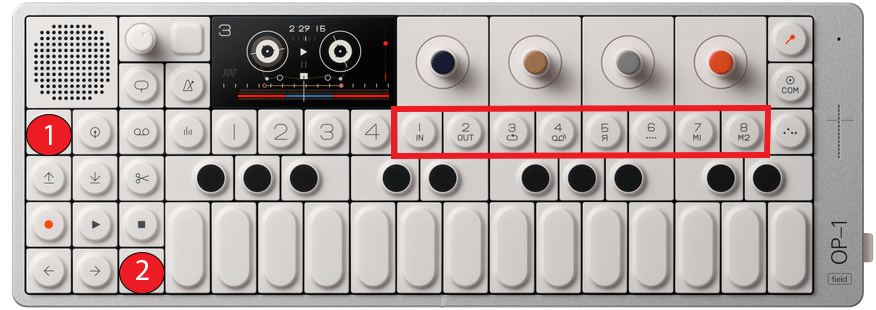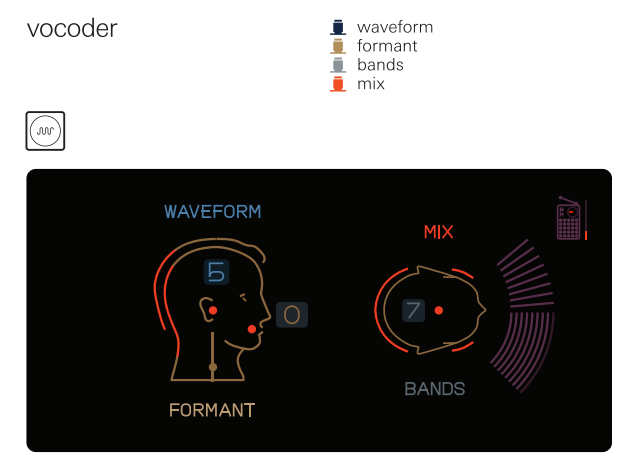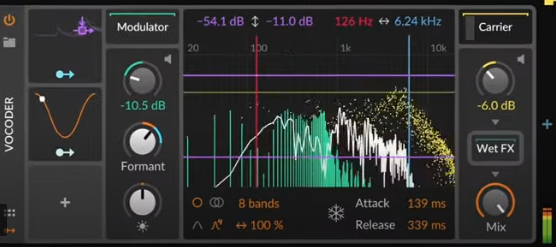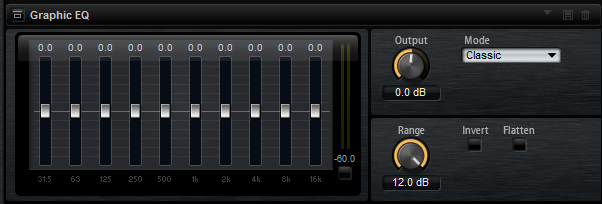OP-1 Field Introduces a Vocoder
1.4.2 Firmware Update Adds Vocoder to OP-1 Field
The OP-1 Field from Teenage Engineering is an all-in-one music machine that just got a whole lot more versatile with the new 1.4.2 firmware update. This update adds a Vocoder to the already impressive OP-1 Field. The vocoder function accepts the OP-1 Field's built-in microphone, a headset like the Teenage Engineering M-1, radio or USB as a modulator, and will turn pretty much any sound into something truly unique.
To access the vocoder on your OP-1 Field, you'll need to download and install the latest firmware update. Then, press synth (1) and hold shift (2) and press any sound slot key from one to eight. After that, simply load the vocoder and you're ready to go.

To update the firmware on your OP-1 Field, follow these steps:
- Go to the OP-1 Field downloads page and download the latest firmware file to your computer.
- Turn off your OP-1 and connect it to your computer with a compatible USB-C cable.
- Press and hold the [COM] button while powering on the OP-1 Field, this will show the OP-1 Field as a drive on your computer.
- Drag the OP-1 Fields update file onto the OP-1's drive and eject the drive on your computer, this will begin the installation process.
- After the install is complete, turn off the OP-1 Field and turn it back on to check out the new Vocoder!
What control do we have over the new Vocoder synth in the OP-1 Field?
- The Blue encoder adjusts a selection of seven waveforms and one noise source that can be blended with waveform 6.
- The Brown encoder allows for adjustment of formant shifting options, enabling manipulation of the nasal characteristics of the synthesized sound.
- The Gray encoder provides control over up to seven filter bands to achieve more vocal-like results.
- The Red encoder features a wet/dry mix control, enabling precise adjustment of the effect in relation to the audio source being processed.

So what is a Vocoder?
The vocoder has been around since the 1930's and was invented by Homer Dudley at Bell Labs. (Wikipedia) This powerful tool was used by iconic artists like Wendy Carlos, Bob Moog, Kraftwerk, Herbie Hancock, Beastie Boys, Tupac, Daft Punk, and many more. Now, thanks to the new update, you can use the OP-1 Fields vocoder and make your own chart-topping bangers. Some notable examples include Cher's 1998 techno-pop hit "Believe," Afrika Bambaataa and Soulsonic Force's iconic "Planet Rock," and Kraftwerk's single "Autobahn."
A vocoder is like a secret decoder ring for your voice! It works by analyzing the unique characteristics of a person's voice and then recreating that voice using a series of filters and synthesizers.
A vocoder is like a secret decoder ring for your voice!
The vocoder analyzes the speech signal by breaking it up into different frequency bands, kind of like how a rainbow is made up of different colors. These frequency bands are called "filter banks." Each filter bank is responsible for a specific range of frequencies in the speech signal. The filtered signal is then mixed with a synthesized tone or sound and the result is a signal that sounds like the original voice, but with the characteristics of the synthesized tone or sound. Basically, a vocoder synthesizes a new sound based on the sounds you input, very cool!


